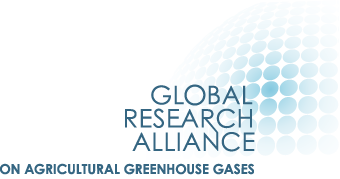Keywords: Livestock characterization | dairy cattle
Enteric fermentation and manure management emissions from dairy cattle are a key category in many countries’ national GHG inventories. Countries have developed different methods of categorizing dairy cattle. The following provide examples of different categorization methods.
One category (mature dairy cows only): Until 2018, the UK’s national inventory categorized only 1 cattle sub-type as ‘dairy cows’. Animal population data come from the annual agricultural survey. This survey collects data on the ‘dairy breeding herd’, which is defined as dairy cows over two years of age with offspring. Dairy heifers, dairy replacements >1 year, and dairy calves <1 year are included along with beef heifers and beef calves in the category ‘other cattle’. Dairy cow emissions were estimated using a Tier 2 approach, while emissions from ‘other cattle’ used a Tier 1 approach.
Sub-categories based on age, sex and physiological status:
- Japan’s inventory applies a Tier 2 approach to all sub-categories of cattle. Dairy cattle are divided into lactating and non-lactating cows, and heifers. Calves of dairy breeds are included in the ‘non-dairy cattle’ category.
- South Africa’s inventory, based on research by Du Toit et al. (2013) categorizes dairy cattle by age, physiological status and production system (Table 1).
Table 1: Enteric fermentation emission factors of dairy cattle sub-categories in South Africa’s inventory
| Total mixed ration based production system | Pasture-based production system | |
|---|---|---|
| Emission factor (kgCH4/head/year) | Emission factor (kgCH4/head/year) | |
| Lactating cows | 132 | 127 |
| Lactating heifers | 127 | 116 |
| Dry cows | 80.4 | 83.4 |
| Pregnant heifers | 67.7 | 61.8 |
| Heifers >1 year | 62.6 | 52.6 |
| Heifers 6-12 months | 42.1 | 37.1 |
| Heifers 2-6 months | 22.5 | 24.5 |
| Calves | 21.5 | 20.0 |
Source: Du Toit et al. 2013
Sub-categories by region: New Zealand’s agricultural statistics report numbers of dairy cows and heifers in milk or calf, non-milking cows, heifers, yearlings and bulls, and calves born alive in each year. Before 2010, the inventory estimated emissions for each sub-type of dairy cattle at the national level. An assessment found that because development dairy cattle population numbers and productivity had been uneven across the country, using a single national approach was no longer the most accurate way of estimating dairy cattle emissions. A time series of data on dairy cattle populations, live weight, milk yield and milk fat and protein contents were available at a regional level. Since 2010, the national inventory separately estimates emissions from different sub-types of dairy cattle in 17 regions, which are then aggregated to the national level.
Further Resources
Clark H. 2008. A comparison of greenhouse gas emissions from the New Zealand dairy sector calculated using either a national or regional approach.
Du Toit CJL, Van Niekerk WA. 2013. Direct methane and nitrous oxide emissions of South African dairy and beef cattle. South African Journal of Animal Science.
Author: Andreas Wilkes, Values for development Ltd (2019)

